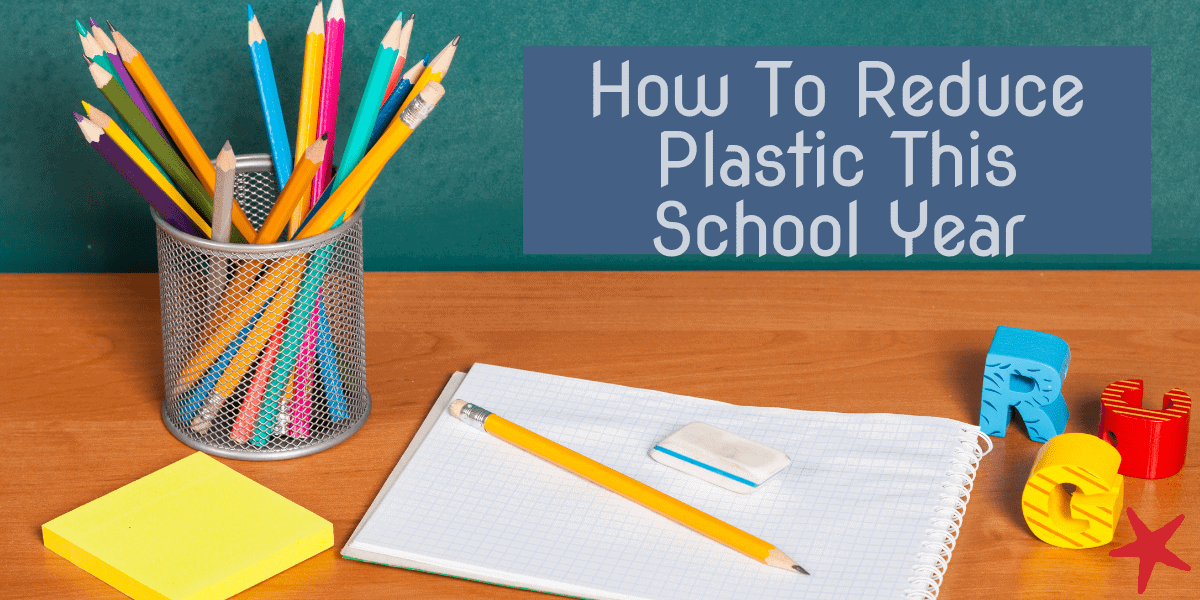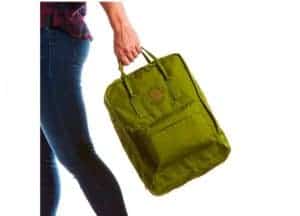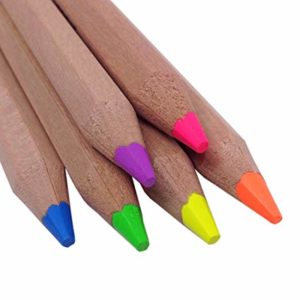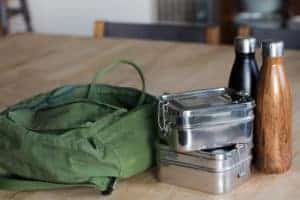Another new school year is just around the corner. That means it’s time to stock up on all of the supplies that our children need to have a successful school year. Have you ever noticed how much plastic is lurking in that school supply aisle? If we’re not mindful about our purchases (from binders to scissors to pens to backpacks), we can quickly end up with a pile of plastic waste doomed for the landfill. However, we can make some easy changes to our school supply shopping list to make a difference in how much plastic our kids use throughout the school year. Every time we buy something we can make a choice to shop smarter for the planet. Read on for ideas on how to reduce plastic this school year.
Backpacks
Every student needs a reliable backpack to carry books and supplies to and from school each day. Most backpacks are made from plastic materials like nylon or polyester. Instead, choose more sustainable fabrics like organic cotton, hemp, or even cork. There are also more brands popping up that offer backpacks made from recycled materials like plastic bottles, bike tires, and even repurposed billboards.
School Supplies
To keep our kids organized and able to do their projects, we need to purchase school supplies to both send to school with them and to use at home. So many of these supplies contain plastic, but there are alternatives to look for that are more sustainable.
- Notebooks and folders: Avoid ones with plastic covers. Choose those made from 100% recycled paper instead.
- Binders: Look for plastic-free binders made from recycled cardboard.
- Pencil sharpeners: Choose metal instead of plastic pencil sharpeners.
- Pens: Don’t buy those throw-away plastic pens. Buy refillable pens or fountain pens instead.
- Highlighters: You can now find pencil highlighters that don’t contain any plastic and you don’t have to worry about them drying out.
- Rulers: Look for wood or stainless steel as opposed to the cheap plastic ones.
- Scissors: Invest in durable 100% stainless steel so they are 100% recyclable.
- Staplers: Avoid those made from plastic.
- Pencil cases: Look for pencil cases made with metal or 100% organic cotton canvas.
- Markers: This is a tricky one to find plastic-free, but fortunately Crayola offers a marker recycling program called Colorcycle.
Clothes
About 60 percent of all clothing is made from plastic-based materials like polyester, nylon, acrylic, and other synthetic fibers. These synthetics may be inexpensive and versatile, but they also contribute to ocean plastic pollution. Try to avoid school clothes made from these materials. Instead, choose those made from natural fibers like linen, silk, Merino wool, hemp, Lyocell or Tencel, and organic cotton. Some innovative brands are also using recycled plastic to make the yarns that create their products. Even if your kids wear school uniforms, you can still make a dent by choosing plastic-free accessories like shoes, belts, and hair ties.
Lunch
Lunch time offers a particularly good opportunity to cut back on plastic waste. According to the Green Schools Initiative, it is estimated that the average school-age child using a disposable lunch generates nearly 70 pounds of waste per school year. That turns out to be over 18,000 pounds of lunch waste for just one average-size elementary school. There are many steps that we can take to shift away from plastic-filled lunches.
- Lunch Box: Choose 100% plastic-free, waste-free, & BPA-free lunch boxes or bags for your children. There are now many stainless steel and silicone options available. Stainless steel is a great option because it is light in weight, it won’t break when dropped, and it is 100% recyclable.
- Food Storage: Fortunately, there are many ways to store food now that don’t involve plastic. Look for insulated stainless steel containers; tiffins made from ceramic or stainless steel; bento boxes made out of either stainless steel or wood that contain multiple dividers to separate portions or items; silicone containers and bags; cloth food sacks; and reusable non-plastic wraps made from a blend of hemp and organic cotton cloth that contain beeswax, tree resin, and jojoba oil to create a self-adhesive to stick to itself so you can create sealed packages and pouches.
- Drinks: Replace disposable juice boxes and pouches, water bottles, and milk cartons with a reusable drink bottle. Opt for stainless steel or the glass ones with a protective silicone sleeve. Not only will you reduce plastic use, but you will also be choosing a healthier option that does not contain harmful chemicals like BPA. Be mindful not to choose a reusable water bottle made out of plastic. It may be a better option than throwaway plastic bottles, but it still doesn’t help with the overall plastic issue that we are trying to address.
- Utensils: Don’t pack plastic utensils or straws in your child’s lunch box. Instead, choose stainless steel straws and utensils or utensils made from sustainable materials like bamboo or palm leaves.
- Snacks: It’s also important to try and avoid snacks like chips, crackers, cookies, fruit, vegetables, and cheese prepackaged individually in plastic.
We’ve got more, easy ideas to make for a more sustainable school lunch here.
As you can see, there are many ways to swap out plastic school supplies for other options. Another way to cut back on new plastic waste is to choose used. Shop for clothes, backpacks, and even office supplies at garage sales, thrift stores, and online sites like eBay or organize a swap with family or friends. Thanks for doing your part to cut back on plastic this school year!





